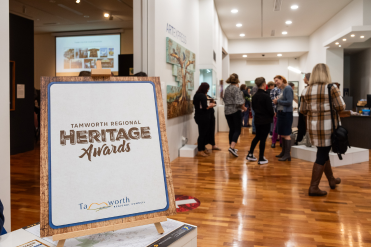Australia’s peak body for strata title properties has launched tough new guidelines to protect owners and occupiers from defect-riddled buildings and deadly flammable cladding.
Strata Community Association (SCA) Victorian CEO Maree Davenport said the SCA National Building Manual Guideline will ensure that all building plans, lists of materials and products used, manufacturer, maintenance instructions and warranty information are handed over to owners before the final Occupancy Permit is granted by the responsible authority.
“Owners in cladding and defect-riddled buildings have been carrying the can for years of poor government building industry regulation and enforcement, which has allowed builders to use dodgy, unsafe and non-compliant building products,” Ms Davenport said.
Ms Davenport said the SCA Guideline would include all soil testing, building materials and products to help identify structural problems and flag other defects to prevent owners and occupants being saddled with costly and uninhabitable strata units.
“Lacrosse and Neo200 were found to have the same flammable cladding as used on London’s ill-fated Grenfell Tower. It was only through good luck and swift, effective fire and emergency response that no one died. Owners, occupants and Owners Corporation Managers need to know the dangers in their built environment, the products used and be confident materials are fit-for-purpose.” she said.
“We have developed the SCA National Building Manual Guideline for the lodgement of all building plans, from the commencement of the building project through to the end. This will capture product, appliance and fixtures, materials, usage manuals, maintenance timetables, warranties and, importantly, essential safety measures (ESM) and plans for emergency evacuation.
“This will be a living document, passed from lot owner to lot owner, on-hand for occupants and Owners Corporations Committees and successive professional Strata Managers. It is a tool for compliance and Essential Safety Measures, as well as maintenance and replacement of end-of-life, dangerous and recalled products.” Ms Davenport continued.
“Cladding is the tip of the iceberg for owners and occupants of defect-riddled buildings across Australia. Nationally, the most common defects are water leaks, balconies, roofing and guttering problems, tile faults which cause mould, internal and external walls cracking, which cause structural safety issues. Among the silent threats are faulty electrical wiring and product safety issues, for example, spontaneously combustible infinity cabling and exploding glass.”
As of 5 July 2019, the Victorian Building Authority audit outcomes were 2,227 buildings inspected, 1,069 found to have combustible cladding of these, approximately 500 in scope of Cladding Safety Victoria, with 53% being 3 or 4 storey buildings, up to high rise residential towers.
“As a result of defects, lot owners – owner occupiers and investors – are paying mortgages on properties worth significantly less than what they paid for them,” Ms Davenport said. “Those with flammable cladding also face huge loans to pay for rectification even if Cladding Safety Victoria (CSV) funds the removal of the cladding itself.”
Owners Corporations are being asked to sign funding agreements which specify CSV will not be rectifying or paying compensation for other defects uncovered and urgent repairs, including wiring, water and mould. The contracts also make owners – who face financial ruin – indemnify the Victorian Government for costs.
“Strata Community Association in Victoria seeks to work with Cladding Safety Victoria to train their Customer Liaison staff about the obligations of Owners Corporations, decision making processes and common property rights and responsibilities. We are also working to empower and protect affected lot owners and their tenants.
SCA is also calling for the establishment of an Owners and Occupiers Register in Victoria to ensure people living in the affected and adjoining properties are contactable in case of emergency, for recalls, routine maintenance, ESMs and importantly, threats to life including overcrowding and dangerous storage of goods, operating drug labs.
“Tenants, owners, friends and relatives, those in sub-letting arrangements and short stay rental such as Airbnb, need to be advised in a timely and effective manner about all risks and issues with essential services, such as gas and water problems, which have immediate effect, as well as building structural and materials defects. This register will also assist with recalls of appliances and faulty products,” Ms Davenport said.
“We urge the Minister for Consumer Affairs to enable the establishment of the register urgently. With the Owners Corporations and Other Acts Amendment Billdebated in Parliament last week, she has the opportunity to include a register to ensure regulations can be made and consultation conducted in the Regulatory Impact Statement process.
“One of the greatest risks in case of fire is not being able to urgently contact occupiers and owners. Until the Lacrosse fire, only lot owners could be notified in case of emergency or evacuation. Legislative changes enabled Owners Corporation Managers to be advised by fire safety, regulators, councils and to convey information to both occupiers and owners.
“Strata properties with professional Owners Corporation Managers can rest assured that access and safety information can be provided in a timely way to councils and regulators as well as occupiers. They are well equipped to liaise between fire and building authorities and owner/occupiers. It would be more efficient with a Register of Occupants.”
“The time for finger-pointing is over. It is time to for solutions to protect everyone in the built environment, for builders to be held accountable and regulators to do their job monitoring and enforcing compliance.” Ms Davenport concluded
MAREE DAVENPORT
· FORMER MEMBER OF PARLIAMENT
· MEMBER OF THE VBA BUILDING APPEALS BOARD 2011-13
· CHAIR OF THE STATUTORY VICTORIAN BUILDING ADVISORY COUNCIL 2013-19
· MEMBER OF THE AUSTRALIAN BUILDING CODES BOARD INDUSTRY LEADERS FORUM
-END-








